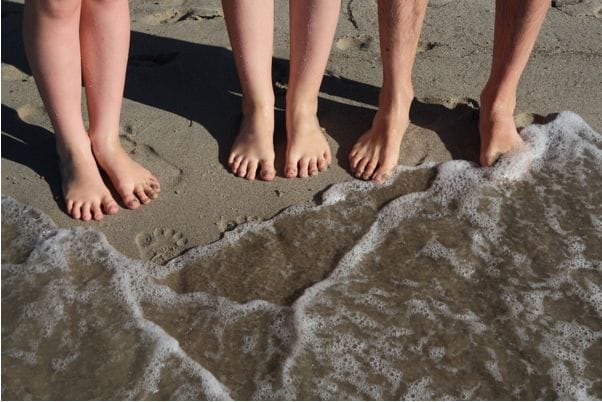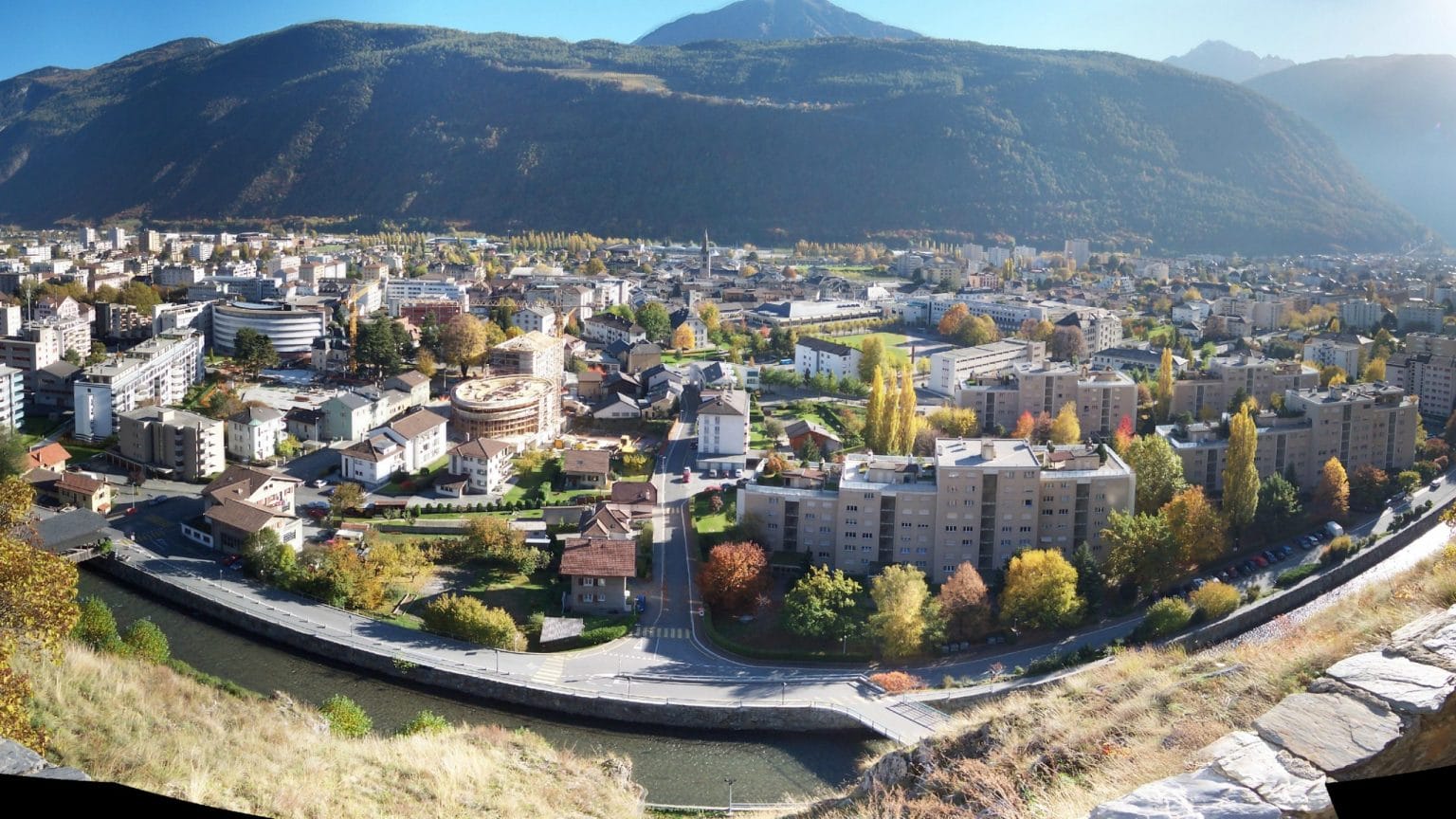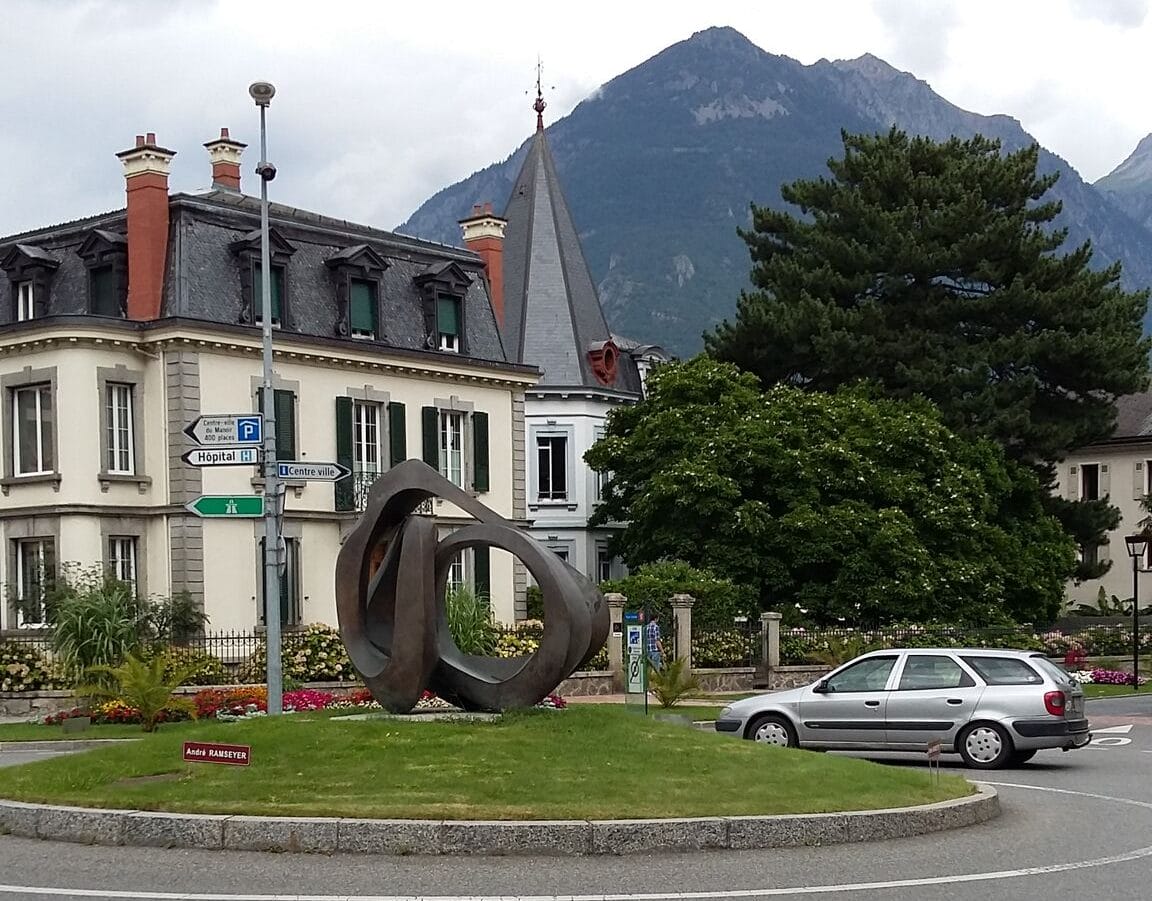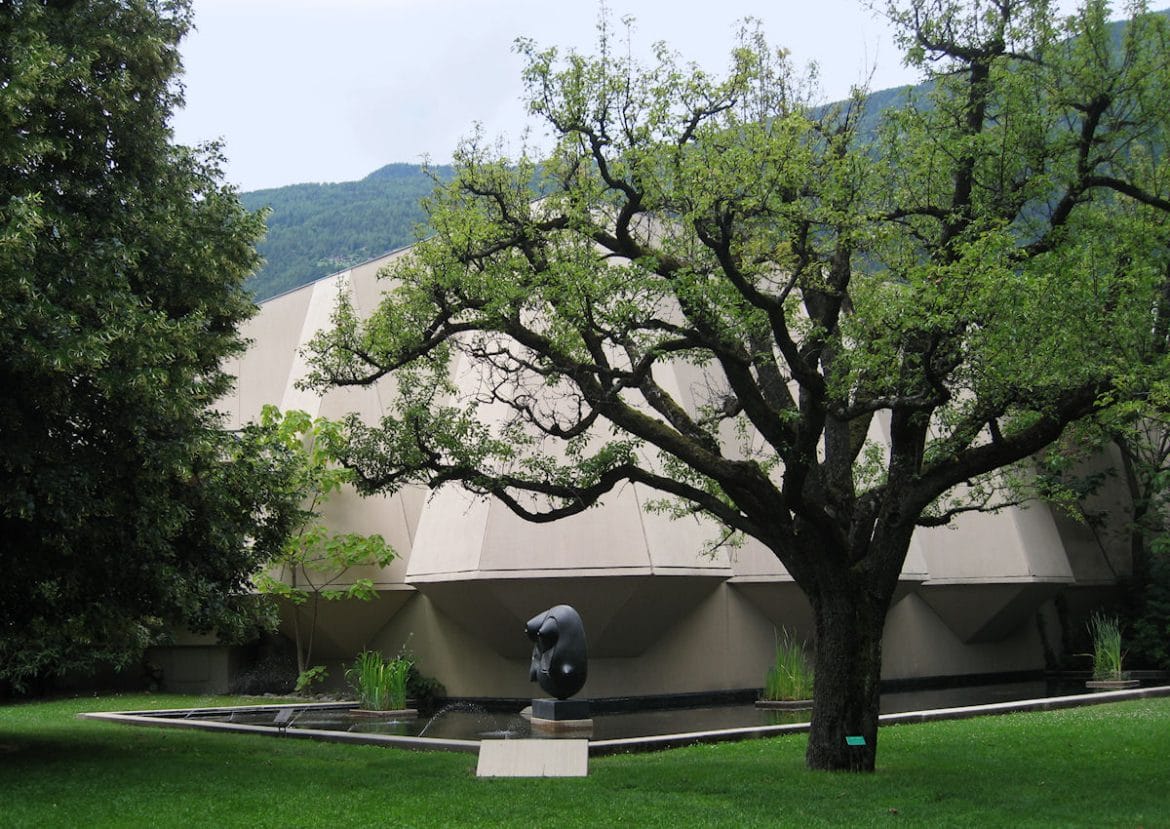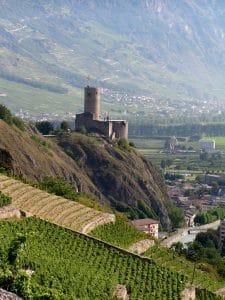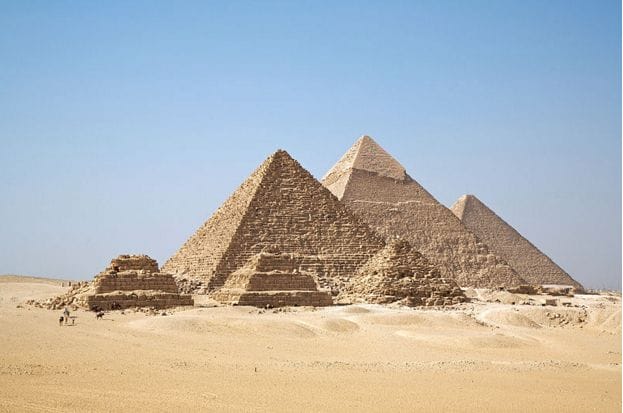Each summer, when visiting the Bernese Oberland, we usually set aside a day to head south by train to the small city of Martigny to view the current exhibition at the Foundation Pierre Gianadda. But Martigny has more to offer than this main attraction – there are Gallo Roman archaeological sites, other museums, numerous high quality public sculptures and an 800 year old fortress.
At an elevation 471m and surrounded by mountains Martigny is picturesquely sited close to a sharp bend in the Rhône, at the point where the great river is joined by the alpine waters of the Dranse. Its population has grown from 5900 in 1950 to its present level of about 17500, and this expansion is inevitably reflected in much of its architecture.
If you arrive by train and wish to visit the foundation or the old town you should proceed directly ahead along the Av. De la Gare. A bus station is nearby, but the walk is not lengthy (about 20 mins to the foundation). A sculpture by the eminent Swiss artist Hans Erni sits proudly on a small roundabout no more than a minute or two from the train station. Then on your left you will soon spy the Tourist Information, where you can pick up a very handy map that gives the location of museums, monuments, architectural sites and the modernist public sculptures.
The tourist office occupies the same building as the Museum of Earth Sciences, whose basement displays mining artefacts, machinery and specimens in an evocative, smallish reconstruction of a mine gallery. The museum is adjacent to the lively Place Centrale, the part café lined, part tree lined heart of the old town. If you are heading for the foundation you will need to turn left and follow the signs.
Foundation Pierre Gianadda
Each year the foundation hosts three well curated, top class exhibitions featuring works by great masters: this summer (2016) it was Picasso, last summer it was Matisse.
The foundation also houses a car museum (over 40 cars) and an archaeological museum, which displays artefacts from the Gallo-Roman period that were found locally.
The well laid out, surrounding gardens are a treasure trove of works by mainly modernist sculptors, including Moore, Ernst, Arp, Brancusi, Calder, Miro and De Kooning together with pieces by Rodin and Bourdelle. These works are carefully and sometimes playfully set amongst a landscape of clearly labelled trees and shrubs.
And if you are staying in Martigny you might choose to attend one of the evening concerts held in the main hall.
Opening times: Daily 9am – 7pm June to November, then 10am – 6pm
Admission: chf 20 with the usual discounts for pensioners, students, children and families
Swiss Museum Pass is accepted
Archaeological sites
The sites of archaeological importance, which hark back to the Roman occupation, are clustered in the area between the Place Centrale and the Pierre Gianadda Foundation. The most impressive is, perhaps, the small restored amphitheatre. It may lack the visitor trappings commonly found at such sites, but entrance is free and it offers the opportunity for quiet contemplation and imagination.
Chateau de la Batiaz
The Batiaz fortress has for 800 years kept a watchful eye on the city and its inhabitants. Its elevated position makes its location obvious to visitors.
On display there is a collection of assorted weaponry and you can watch a film about Martigny in the Middle Ages. It can be reached by foot or by the small tourist train from the Place Centrale. You will be rewarded by a superb view of the Rhône valley.
Open May to October.
Worth considering
Not far from the foundation is Barryland, a must for lovers of St. Bernard dogs.
The Protestant Church of Martigny, also in the vicinity is a gem. This small church has recently installed 17 fine stained glass windows, designed by Hans Erni, who remarkably was over 100 years old at the time.

